第88章
It is then necessary to calculate what is due, by the one party to the other at these periods, and these calculations are naturally made in money.
Instead, for instance, of returning two cows at the end of five years, the bargain may be, that a proportional sum is to be paid at the end of the first, second, third, fourth, and fifth years.Were money paid for the cow immediately, the amount we shall say would be twenty dollars, the double of that, which would be the sum to be given were the time of payment deferred till the expiration of five years, is forty dollars.The annual payment can neither be a fifth part of the one sum, four dollars, nor of the other eight dollars, but one between the two, in this case about six dollars.Again, the bargain may be, that a cow be returned, at the expiration of the fifth year, and that, for her use during that time, an annual remuneration be made; this would be a half of the former annual payment, nearly three dollars, and that sum accordingly, when such an arrangement takes place, is the usual yearly payment, for what is called the rent of the cow.Whatever order instruments may be at, some similar calculation might determine, what should be the proportion annually paid for the use of any of them.
The employment of money in these calculations has simplified them, by the introduction of general rules.The return which instruments make, is estimated at so much in the hundred, or per cent.that is, in the hundred pounds, dollars or whatever may be the current coin.Reducing our orders to this phraseology, they would be respectively: --A 100 per cent.per ann.
B 41 " "
C 26 " "
D 19 " "
E 15 " "
F 12 "
G 10 "
H 9 per cent.per ann.
I 8
J 7 "
K 6, 5 "
L 5,9 "
M 5, 5 "
N 5 " " &c.
It is on these principles, that all reckonings are made., not only of instruments given on credit, but of those retained.In the latter case, the annual return is termed profits of stock, in the former interest.There is, however, this difference between the two, that, in the profits of stock, is generally included the return that has to be made, for the mental exertion and anxiety, and bodily fatigue, of the owner of the stock.There is, also, a difference between them, in common language, arising from its being the practice to speak of the more favorable issues of instruments, as determining the rate, without reckoning those that have turned out less favorably, or unfortunately.Thus Adam Smith: "In a country where the ordinary rate of clear profit is eight or ten per cent.it may be reasonable that one half of it should go to interest, wherever business is carried on with borrowed money.The stock is at the risk of the borrower, who, as it were, insures it to the lender; and four or five per cent.may, in the greater part of trades, be both a sufficient profit upon the risk of this insurance, and a sufficient recompense for the trouble of employing the stock." (56) Here, ordinary profit evidently means, not the average profit, but the profit of favorable years.The average profit of a merchant, for example, is not properly the profit he makes upon his more favorable adventures, but what he makes on all those adventures that yield a profit, whether great or small, after deducting the actual loss he may sustain on others.
The average profits of all the merchants of any country, also include their very favorable, their less favorable, and their losing adventures.In this way, using the term profit, for the return made from the outlay expended on the formation of the whole instruments spoken of, actual losses are also included in it, and, in speaking prospectively of future profit, the risk of future loss is included, and what Adam Smith calls the risk of insurance disappears.If in a country where the average profit is, in reality, only eight per cent.a particular merchant continue for some years, to make ten per cent.he may indeed expect, and is perhaps apt to expect, the same return in future years, but, unless in so far as he can truly calculate on his mercantile sagacity and activity being above par, in so doing, he acts imprudently, and the chances are, that he is undeceived by having to sustain actual losses in succeeding years.
We may then assume the rate of interest as a fair measure of the real average rate of profits, in any country, and consequently of the order in our series, at which instruments are there arrived.So receiving it, we shall find that it agrees very closely with tho preceding observations.
In China, we are told by Barrow, that the legal rate of interest is twelve per cent, but that, in reality, it varies from eighteen to thirty-six.